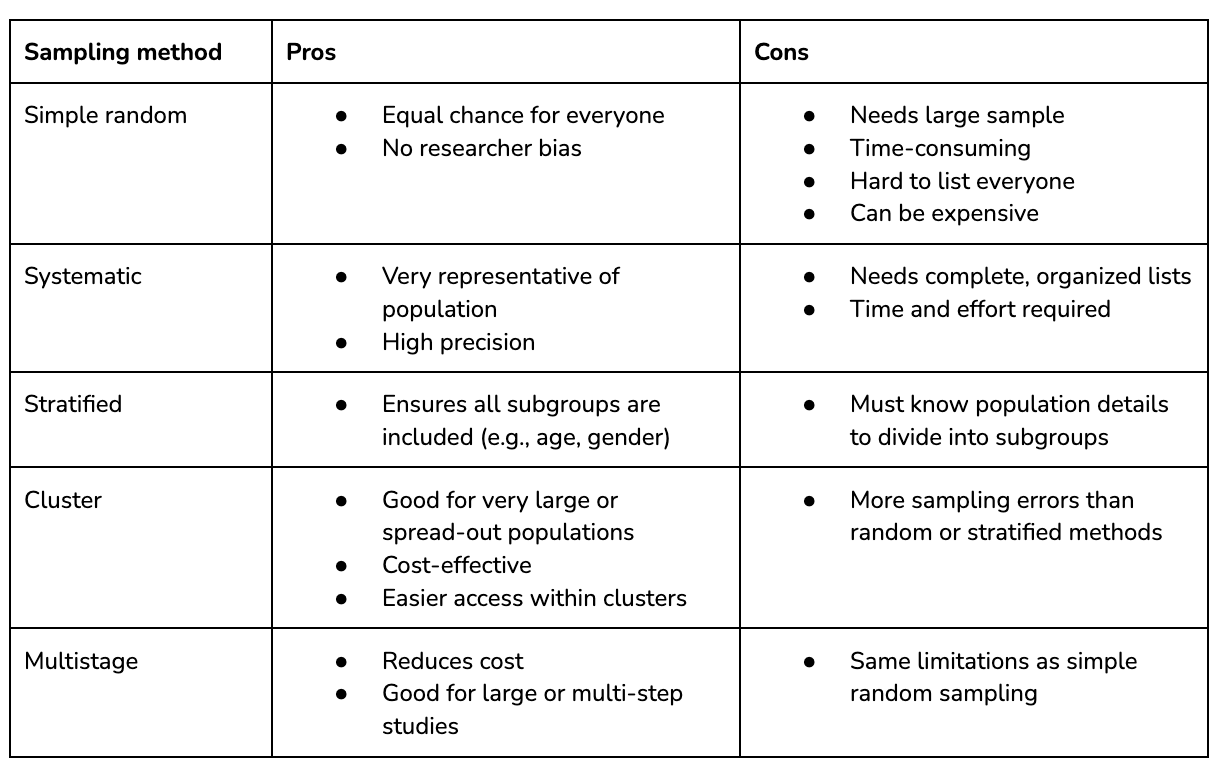Probability sampling
1/6
There's no tags or description
Looks like no tags are added yet.
Name | Mastery | Learn | Test | Matching | Spaced |
|---|
No study sessions yet.
7 Terms
Sampling
Population - entire set of person, objects or events under study
Source sample - subset of the population in interest
Sampling - selection of the sample
Probability sampling/random sampling
Important in quantitative research
No systematic bias
Generalise findings to the population of the sample
Simple random sampling
Each unit in population has equal and independent chance of being selected into sample
Selected one at a time, independent of one another and without replacement
PROS - Equal chance for everyone, No researcher bias
CONS - Needs large sample, Time-consuming, Hard to list everyone, Can be expensive
Systematic random sampling
Dividing the sampling frame into intervals
Randomly selection a starting point then selecting one element from each interval in a systematic way
E.g. every fifth person
Don’t use if there's a possibility of bias in arrangement
PROS - Very representative of population, High precision
CONS - Needs complete, organised lists, Time and effort required
Stratified random sampling
Strata - population groups that are separate and non-overlapping
Randomly samples from within each stratum
Proportionate sampling - sample size is proportionate to the population of the stratum
Disproportionate sampling - simple size is disproportionate to the population of the stratum, leading to over-sampling of groups
PROS - Ensures all subgroups are included (e.g., age, gender)
CONS - Must know population details to divide into subgroups
Cluster random sampling
Population is divided into clusters (e.g., areas, schools, hospitals).
A random sample of clusters is chosen (using simple, systematic, or stratified sampling).
The whole cluster or a sample from within the cluster is studied.
Cluster = sampling unit (not the individual).
Better to choose more clusters and fewer people from each
PROS - Good for very large or spread-out populations, Cost-effective, Easier access within clusters
CONS - More sampling errors than random or stratified methods
Multisatge (pros and cons)
PROS - Reduces cost, Good for large or multi-step studies
CONS - Same limitations as simple random sampling
